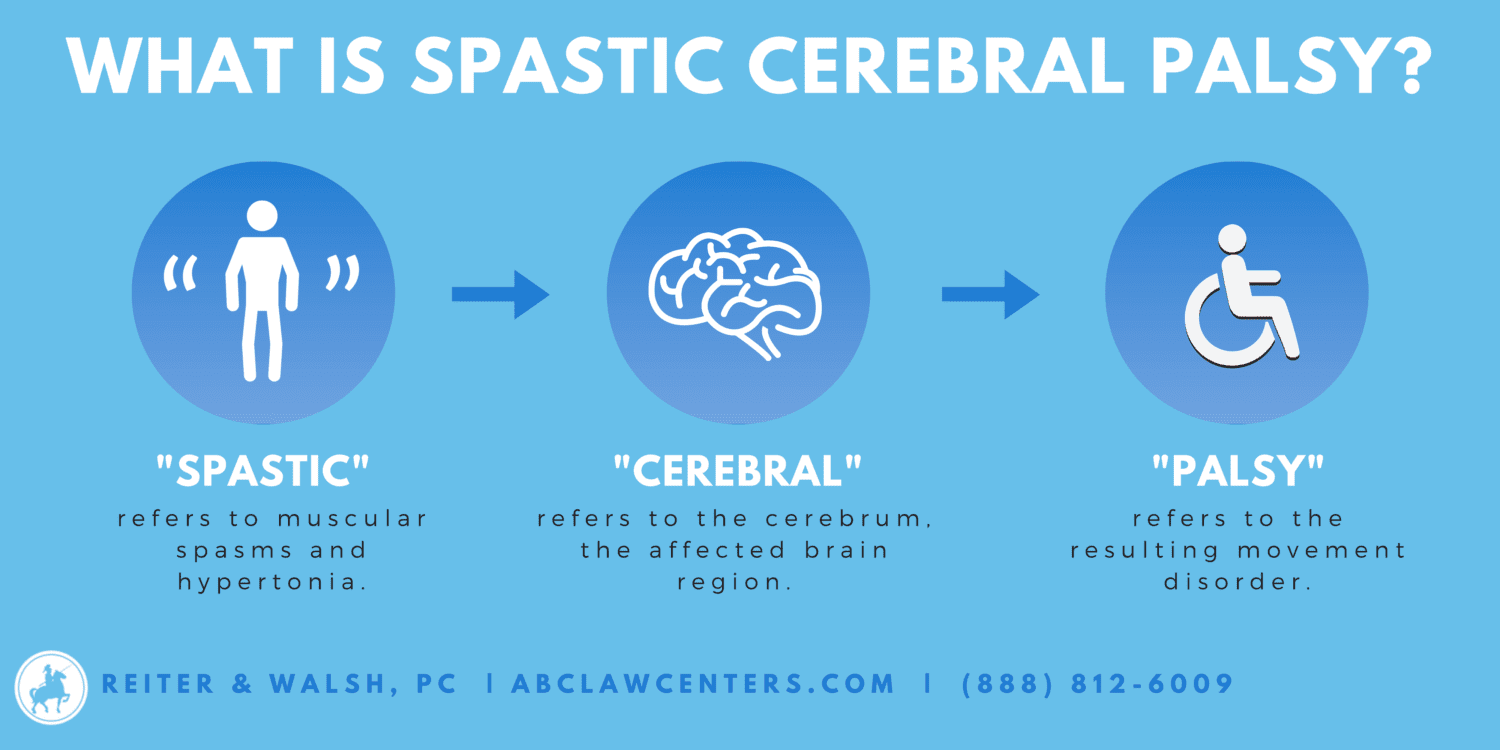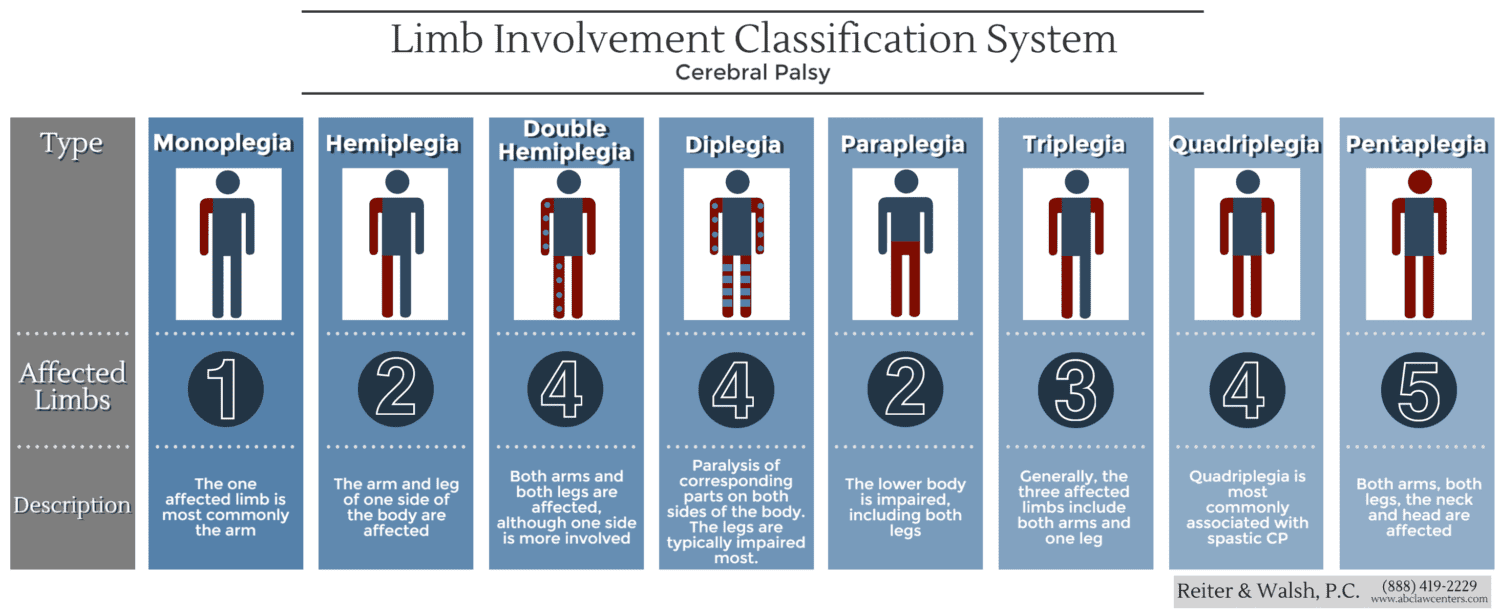What is spastic hemiplegia?
What is spastic hemiplegia?
Cerebral palsy (CP) is a group of motor disorders that can cause impairments to physical movement. A child with cerebral palsy may have jerky or awkward movements due to spasticity – stiffness or spasms – in their muscles. Spastic hemiplegia is characterized by muscles that are paralyzed (-plegia) or weakened on one half (-hemi) of the body. With this type of spastic cerebral palsy, the arms are usually affected more than the legs. Impairments to these limbs cause abnormal patterns of movement, which can negatively impact a child’s ability to do basic functions or activities independently. In children with cerebral palsy, 25% have spastic hemiplegia.

What causes spastic hemiplegia?
Like other forms of cerebral palsy, spastic hemiplegia is caused by an abnormality in or injury to the brain. Often, an injury to a child’s brain during birth can lead to the cognitive and motor disabilities associated with spastic hemiplegic cerebral palsy. If a complication occurs during labor or delivery, the baby becomes at risk of not getting enough oxygen in the womb. When a baby doesn’t get enough oxygen, it injures their brain, and the baby grows to develop permanent disabilities, like cerebral palsy.
While there are various causes of cerebral palsy, the following are a few examples of birth injuries and complications that can lead to spastic hemiplegia if not managed in time:
- Hypoxic-ischemic encephalopathy (or HIE) occurs when a baby is deprived of oxygen at or around the time of their birth. Since HIE injures the brain, it’s often associated with cerebral palsy and other permanent disabilities.
- Perinatal stroke occurs when parts of the brain don’t get enough blood supply at or around the time of a baby’s birth. This can occur with HIE, since the brain needs oxygenated blood flow in order to function normally.
- Premature birth is used to reference a baby born before 36 weeks. Cerebral palsy is more common in babies born too early. The earlier a baby is born, the higher their risk is of developing cerebral palsy.
- Preeclampsia is a condition in which a mother develops abnormally high blood pressure or high levels of protein in her urine before 20 weeks into the pregnancy. This condition can put the baby at risk by causing issues with the placenta, leading to low blood flow, especially low oxygenated blood flow to their brain.
Most birth injuries are preventable.
If you believe your child may have spastic hemiplegia as a result of an injury at birth or during labor and delivery, contact us today for a free consultation. We have helped families like yours for over 25 years, and our firm focuses exclusively on these types of cases.
How do I know if my child has spastic hemiplegia?
Cerebral palsy affects people in different ways and to varying degrees, so there is not one lone sign or symptom that’s used to identify CP. However, since spastic hemiplegic cerebral palsy affects one side of the body, it has a few defining characteristics. Typically, the hand and arm on one side of the body are most affected, but the leg on the same side may be affected, too. These limbs usually have an abnormally high muscle tone, or tightness and stiffness. Spastic hemiplegic CP particularly can affect the flexor group muscles, resulting in involuntarily flexed limbs, such as the following:
- An arm held close to the body
- An abducted thumb and/or fisted hand
- A pointed, flexed foot, or walking on their tip toes
It’s important to note that it may not be immediately apparent that a child has CP until they start missing developmental milestones, like crawling, rolling over, or walking. Some children with spastic hemiplegic cerebral palsy may have delayed speech, too, but abnormal motor control often indicates cerebral palsy.
If an infant shows milder signs of cerebral palsy, it may be difficult to identify right away. Doctors use neuroimaging to identify cerebral palsy in an infant’s brain. Cranial ultrasounds (CUS) and magnetic resonance imaging (MRI) are used to view the brain’s structures and tissues in order to identify the location of the injury and the extent of the damage.

Treatments for spastic hemiplegia
While there is not one singular type of treatment for spastic hemiplegia, early intervention and treatment is very important. Treatment and therapy for cerebral palsy can help improve a child’s capabilities and help to manage their disability. Since each child with cerebral palsy may have varying capabilities, it’s important that they each have individualized treatment and therapy to address their specific needs. Some common methods of treating cerebral palsy are:
- Physical therapy, including stretches and exercise to maintain or improve muscle strength and balance
- Special braces (known as orthotics)
- Occupational therapy, which works to improve function and help a child’s mobility with common or day-to-day activities
- Medication, such as baclofen or botox treatment
- Recreational therapy, which can help improve a child’s emotional health, including their self-esteem, and help socialize them with their peers
- Complementary and alternative therapy, such as equine therapy


Legal help for kids with spastic hemiplegia
Cerebral palsy can be the result of a preventable birth injury. Birth injury cases are complex, both medically and legally. For the best case outcome for your child, it’s critical to find an attorney and a law firm that focus specifically on birth injury cases. At ABC Law Centers: Birth Injury Lawyers (Reiter & Walsh, P.C.), our attorneys have focused their entire careers on this area of law, especially cerebral palsy cases, and they consistently secure multi-million dollar settlements for our clients.
Contact us today to begin your free case review. We will answer your questions, help you understand where malpractice may have occurred in your child’s case, determine the negligent party, and inform you of your legal options. You pay nothing throughout the entire legal process unless we win or favorably settle your case.
Featured Videos
Posterior Position
Hypoxic-Ischemic Encephalopathy (HIE)

Featured Testimonial
What Our
Clients Say…
After the traumatic birth of my son, I was left confused, afraid, and seeking answers. We needed someone we could trust and depend on. ABC Law Centers: Birth Injury Lawyers was just that.
- Michael
Helpful resources
- UptoDate: Cerebral palsy: Classification and clinical features
- Cerebral palsy in children: a clinical overview – PMC
- Hemiplegia: Definition, Causes, Symptoms & Treatment
- What is Cerebral Palsy? | CDC
- Cerebral palsy: Epidemiology, etiology, and prevention – UpToDate
- Cerebral Palsy | National Institute of Neurological Disorders and Stroke
- Early Intervention to Improve Hand Function in Hemiplegic Cerebral Palsy


